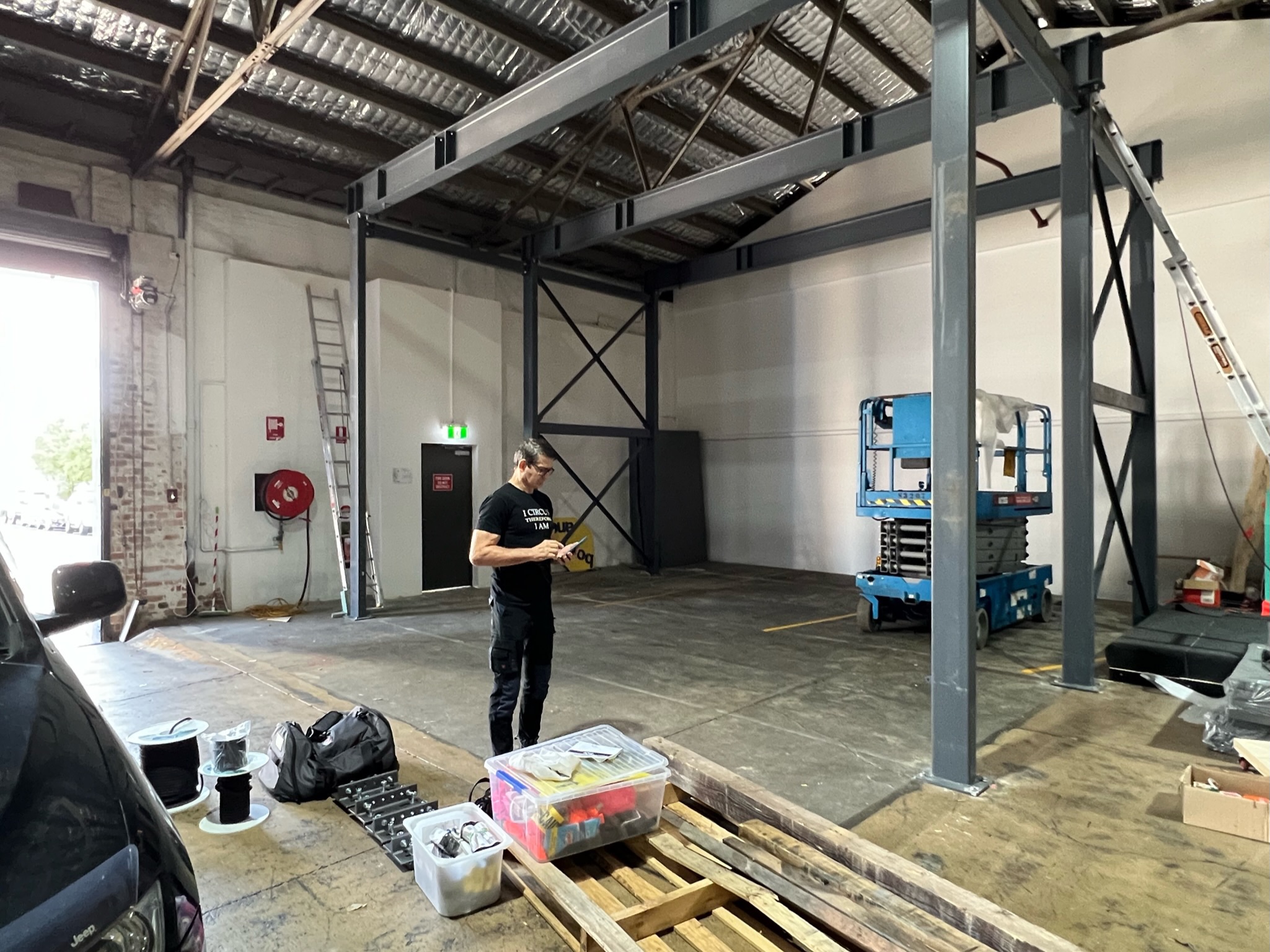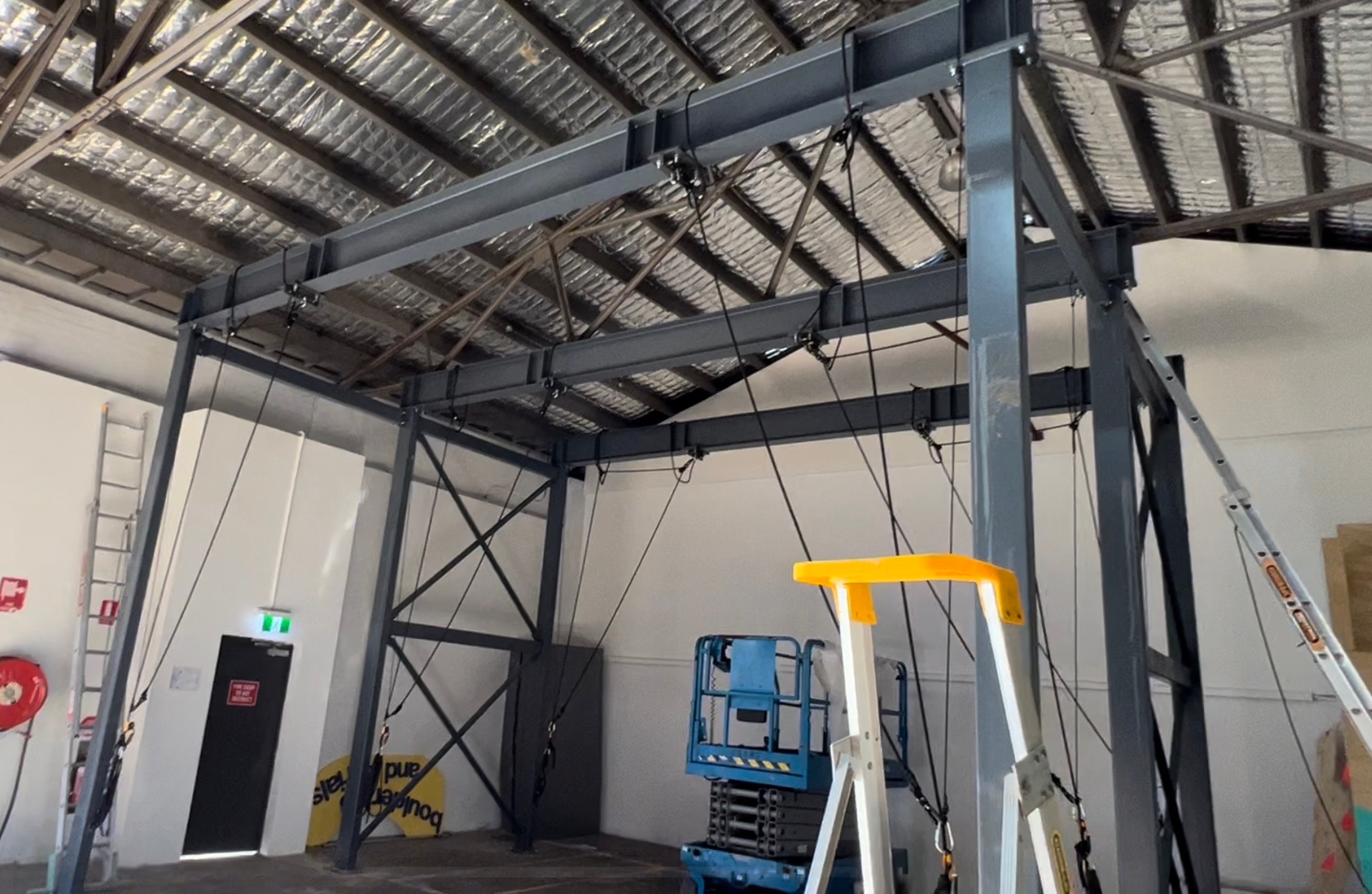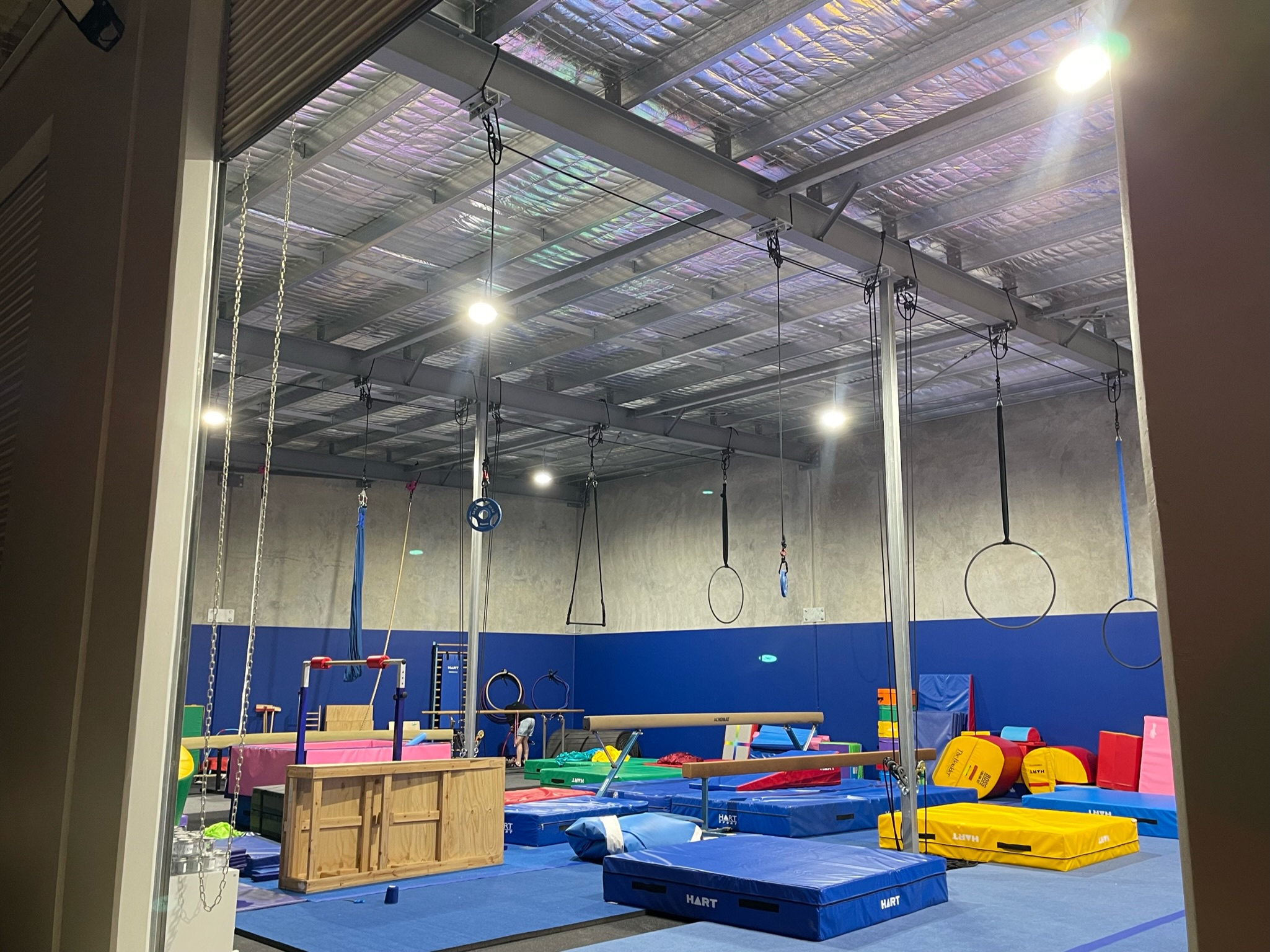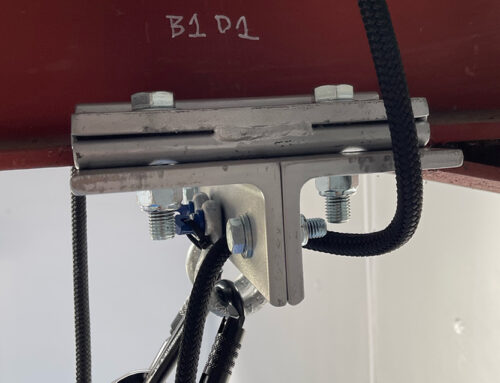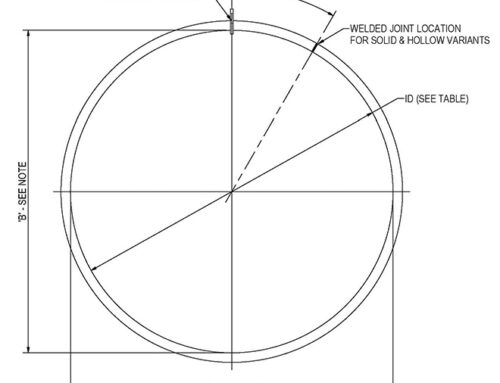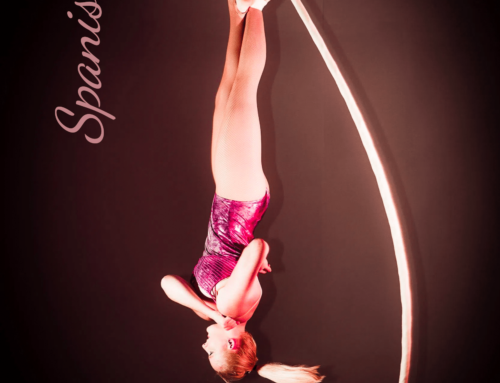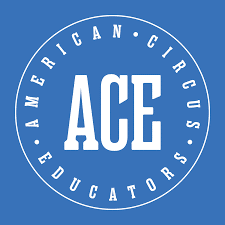Putting aerials into your studio or school seems like a super fun idea. But how do you go about it? What do you need to know? Who can help you?
Here is a step-by-step dialogue of what we tell people when they contact us for advice. We field these questions on a daily basis. Sometimes it is possible to install aerial circus in a space. And sometimes it is not.
Warning: Aerials is expensive!

- We only create rigging plans under the guidance and advice of structural engineers this is costly.
- The rigging equipment is an initial outlay. Some of it, like aerial silks, can get rips and burns and may not have a long lifespan.
- The initial installation is costly. It takes many hours to do an install and we have to employ 2 riggers minimum. There are always surprises on an install and that means the actual install time may exceed the quoted time.
- Setting up an aerial studio is not a one-off expense. There are ongoing expenses and you need to take this into consideration when you decide to add aerials to your classes. This includes biannual rigging inspections and equipment maintenance.
So now that the financial shock is dealt with, let’s look at the steps of starting the studio set up process:
-
Have a plan
You do not need to call us with your class timetables and a list of your teachers, but at the least have a general idea of how many aerial points you’d like to have installed and what apparatus you will teach on these points – this information will help us to negotiate your needs with the size of the space and the engineer’s information.
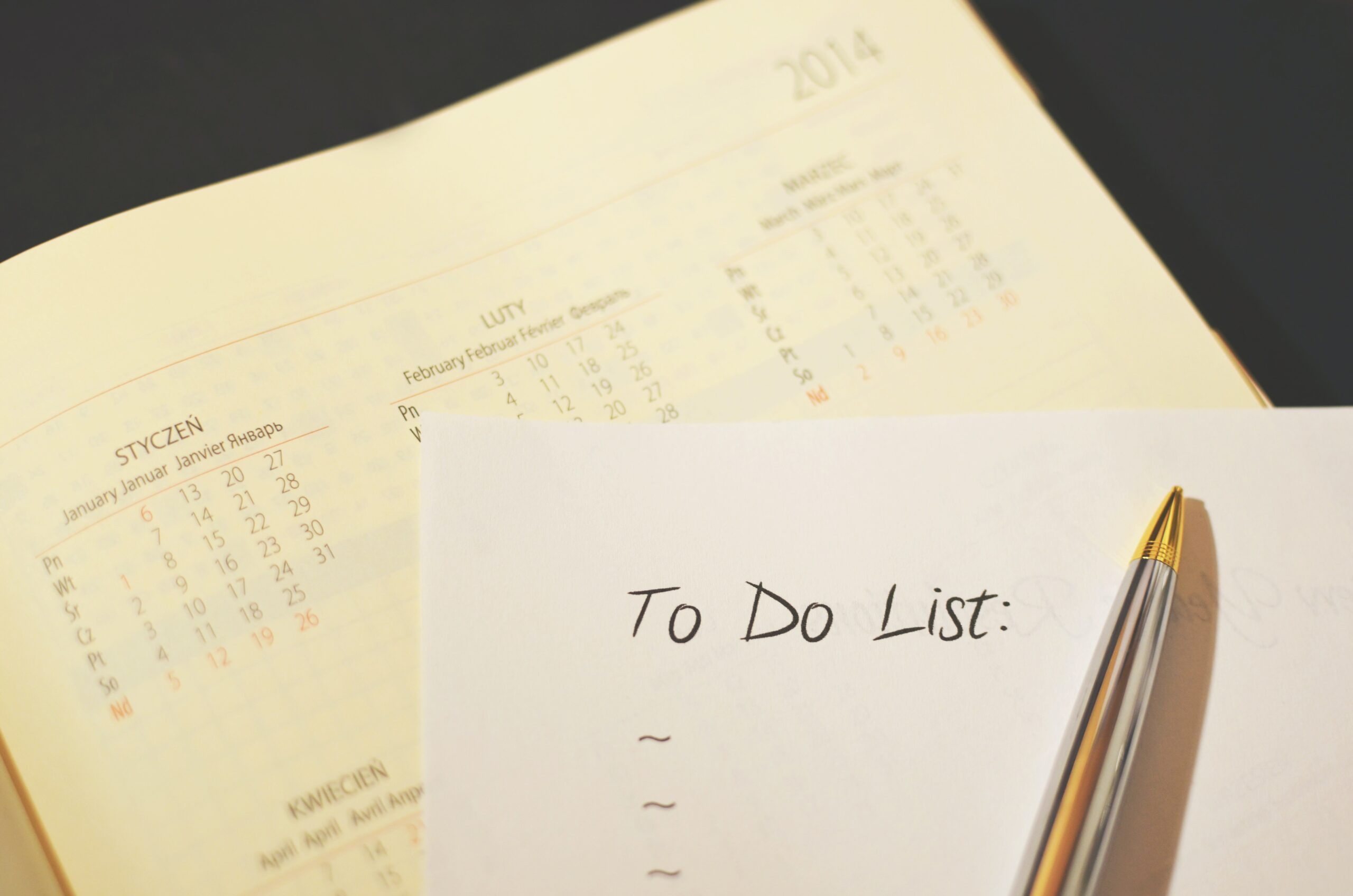
-
Share photos and videos of the space
Send us photos and videos of your proposed space. It is helpful to label where you are planning to set up your aerial points. We need to see the beams clearly for hanging points, and the walls and floors for anchoring points. From looking at this, we can offer advice as to whether it is worth proceeding to the next, financially costly stage.
If the proposal looks promising, you can book us for the planning and engineering advocacy stage.
-
Trix Circus engineering consultation and design work.
While we can do the installation and create a plan, we only do this hand-in-hand with a structural engineer. If your building is new, finding the engineers will be easy and we can work directly with them. If it is older than a few years, we will often need to source a structural engineer in to do a site inspection and validate the steel and concrete structures. This can add greatly to the expense and the planning time.
Our time is charged at $120/h and we charge an initial fee of $1000. This gives you 8h and 20m of our time dedicated to working on your project. Some projects are resolved in less time than this. In this situation the remainder of the fee will be credited to your account or refunded to you.
This process can take up to 6 months. It involves lots of communication between us, you, and any third party team members to ensure everyone is on the same page. This is to ensure you get the most functional space that operates at the highest level of safety. Please understand that there will be limitations and you might not be able to get exactly what you imagined. There might be weight limits per beam, the span of the UB might be too long to hold weight, the concrete might be too old to support more loading or there may not be enough space to place as many aerial points as you desired.
-
Engineering
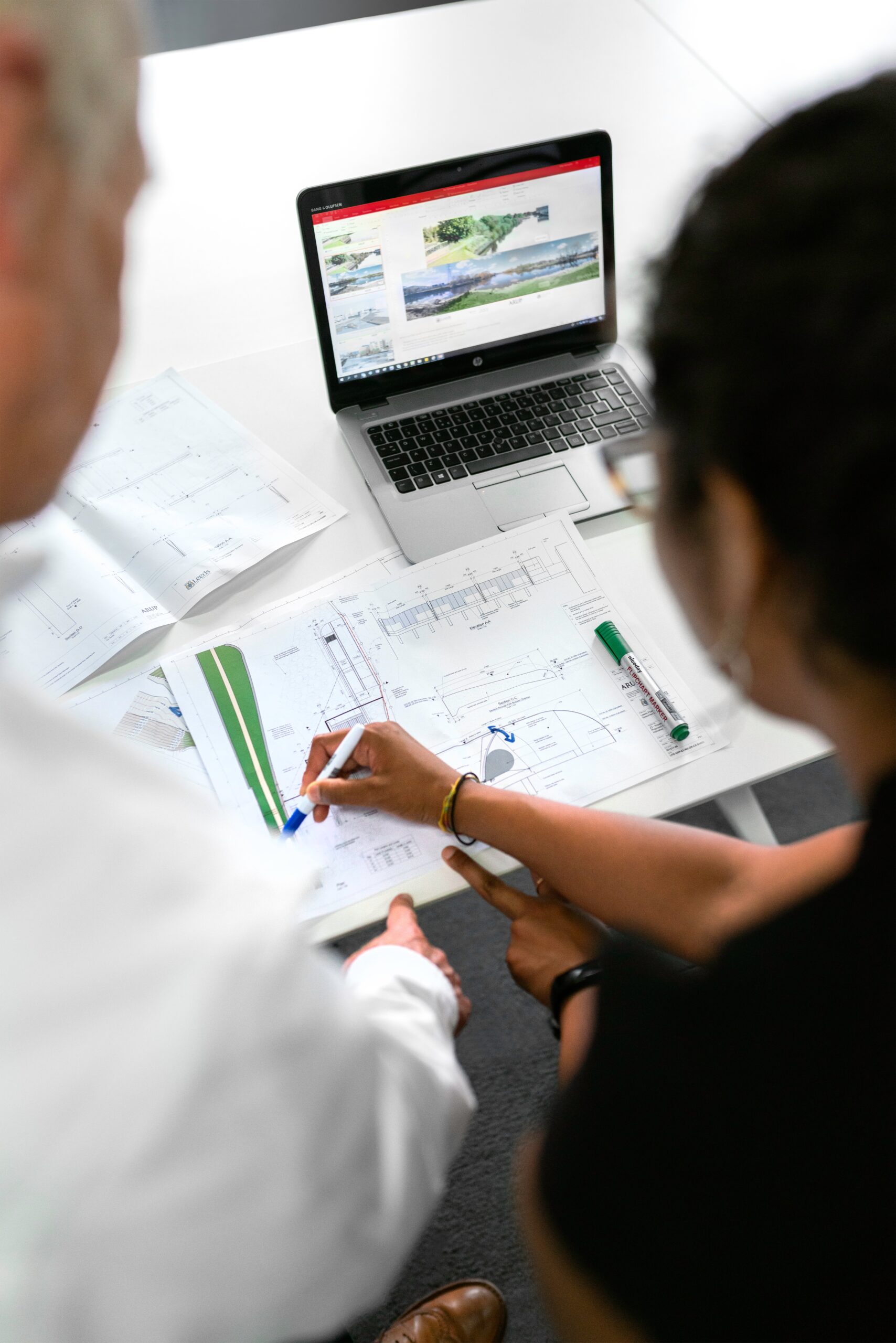
As we discussed above, we work with a structural engineer to create an installation plan. This is because the engineer has the knowledge required to know if the building’s interior is suitable for aerial rigging and also to identify any limitations that may be present.
There might be a lot of steel in your ceiling. Some of it might look awesome. But mostly it is going to be purlins, spacers, braces, C channels, U channels, Z channels and a bunch of stuff that isn’t suitable for us to rig onto. We need universal beams (UB) for aerial rigging. We also need to know how they are mounted into the supporting vertical structures and exactly how strong that vertical structure is. This is what the engineer will determine when they do an inspection.
What else should the engineer inspect?
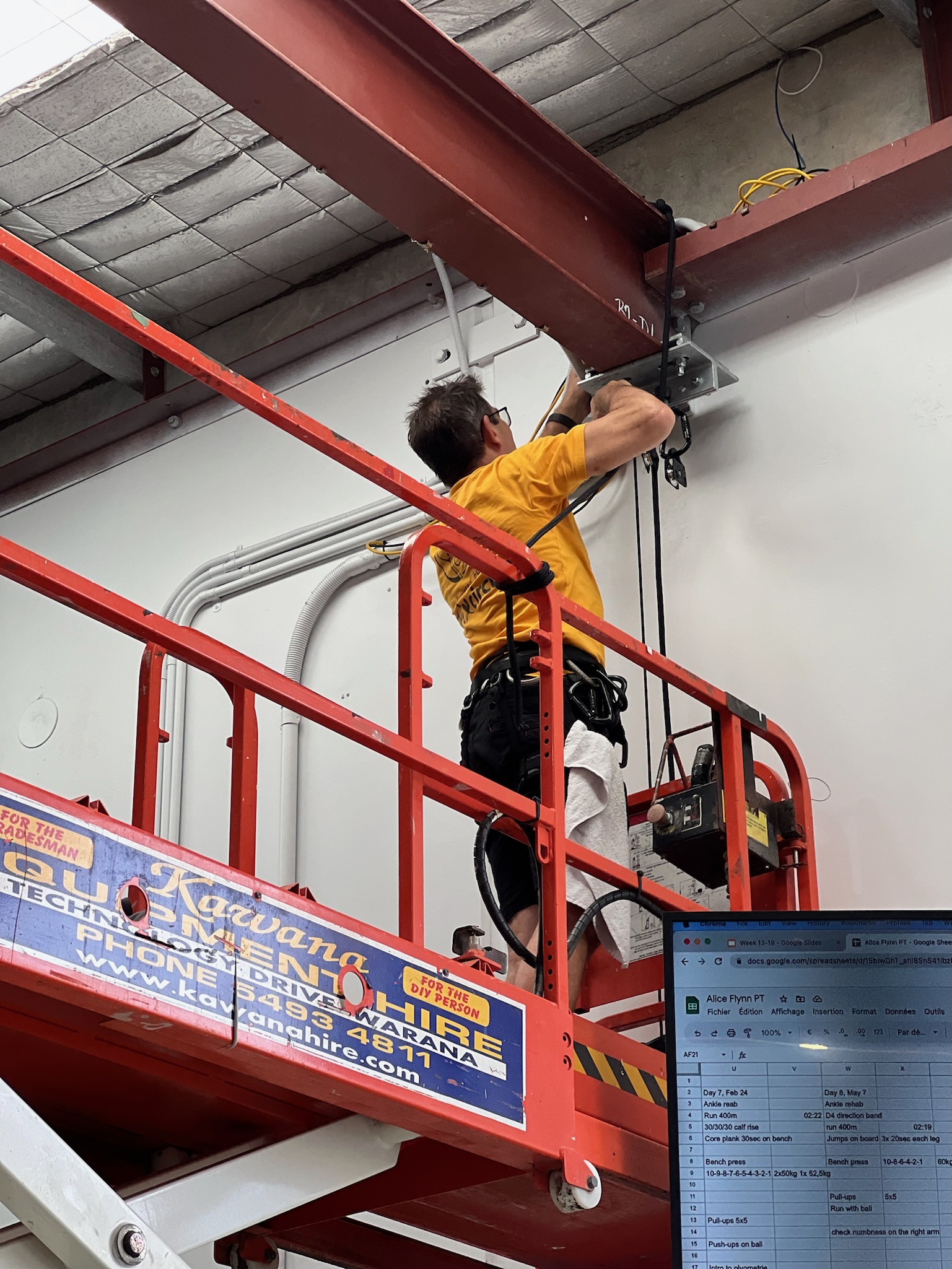
If you are considering installing pulley systems instead of static points, potential anchorage placement will also need to be assessed by the engineer. Concrete or steel are potentially good sites for anchorage. However, not all steel is strong enough and not all concrete has the grade or depth necessary for anchorage. Only an engineer can tell us this. It is out of our purview to determine this. Some structures, such as bricks or wood are never appropriate for anchorage.
We will only continue with the planning based on the engineering advice. We work in conjunction with the engineers to determine loads and placements for moving points, static points and anchorage. The engineer will create a Form 15 (Compliance certificate for building design or specification). This provides us official documentation from which we do the installation. A Form 16 is an Inspection certificate that may also need to be completed, post-install, by your engineer. Please note: sometimes the engineer will give us the advice that we cannot install anything on existing structures. At this point, you either need to find a new space or build a separate structure into the space using trussing or universal beams.
Question: Do I need engineering if I’m buying an existing aerial studio?
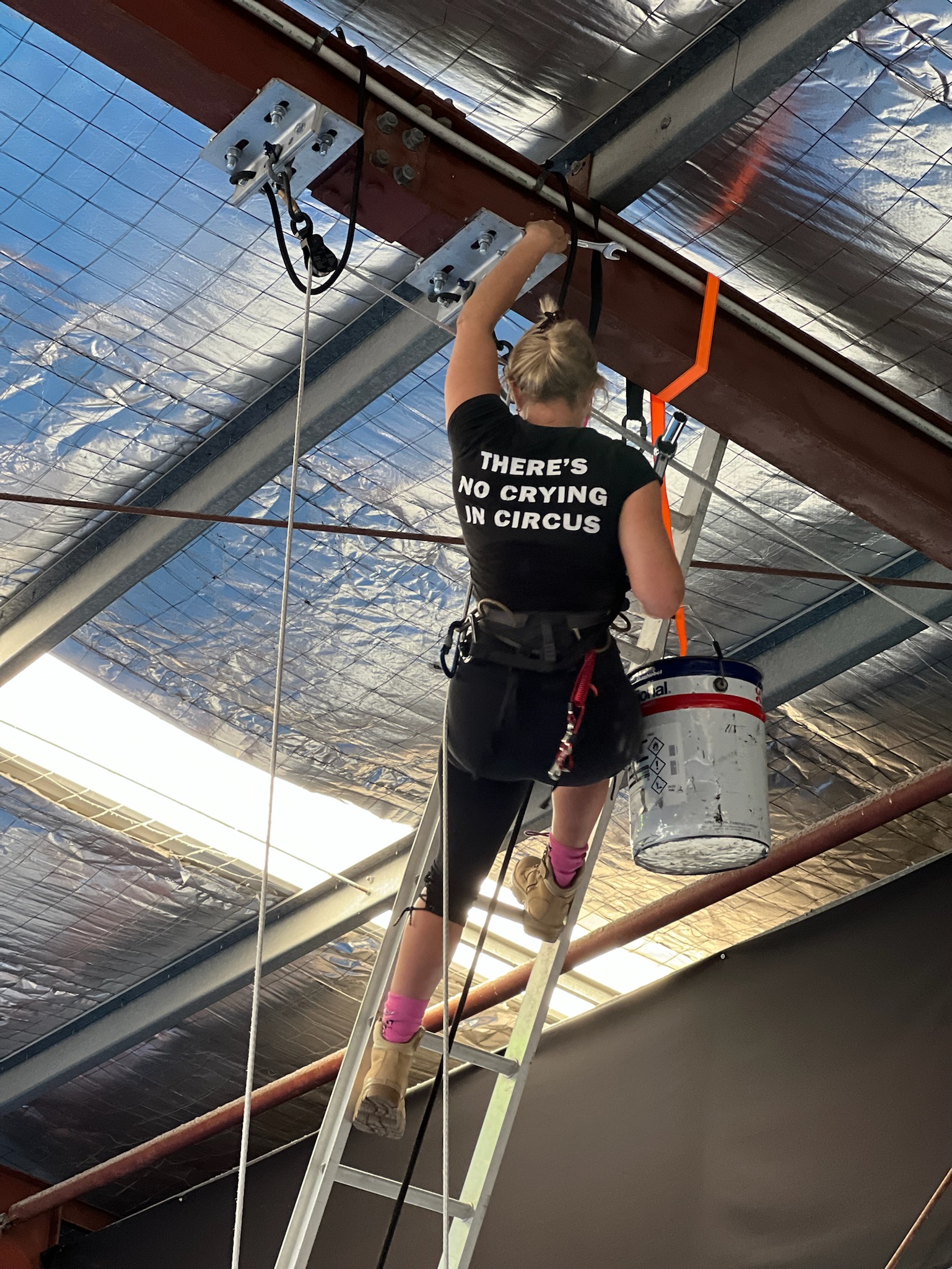
If you are looking at buying an existing studio, there is no guarantee that the previous owner has done their due diligence and had the space properly inspected and the equipment correctly installed. Unless you have a Form 15 and Form 16 from the previous owners, we highly recommend getting a structural engineer and an advanced rigger (who specializes in circus or entertainment) to verify it for you prior to you committing to the purchase. We have seen this exact situation happen multiple times; the seller assures the prospective owner that the studio was installed safely, only for the new owner to find out after finalizing the purchase that it is in fact not safe and needs to be completely redone, or worse condemned entirely. This is very disappointing and hugely expensive. Please do your homework carefully before you buy into the dream of an aerial studio.
-
Cost
As mentioned previously, setting up aerials is costly. Here is a list of costs you need to consider before you start. Take this just as a general guide:
- Engineering – between $5000 and $7000
- Trix Circus design consultation – around $1000 (depending on the complexity of the design)
- Zoning: can be $20,000 for upgrading your studio to the correct zoning requirements for your local council
- Truss or beam installation (if the existing structure is not suitable) – $20,000 – $40,000
- Anchor Testing: around $1100 for post-installation test. This is an annual ongoing fee.
- Rigging equipment – we only use reputable brands such as Rock Exotica and Petzl. These are costly. Trix Circus beam clamps for moving points are $450 each.
- Aerial equipment – depends on quantity.
- Rigging time – rigging is very time consuming. We always send out 2 qualified riggers, charged at $120/hour for each rigger (minimum 3 hour call). Also add to this travel time and travel expenses for the riggers.
- Lifting plant hire – for higher ceilings and for more complex installations we will need to hire a lifter. This will add between $500 – $2000 to the installation cost
- PPE – you will need to buy crash mats. Average cost of each crash mat is $950 and you will need one for each aerial point.
- Coaches – salaries and superannuation, it all adds up!
- Insurance – you will need specific insurance for your aerial classes.
- Inspection cost – each aerial point will need to be inspected by a team of 2 qualified riggers every 6 months (at the same cost as the initial rigging installation $120/hour per rigger, minimum 3 hour call). This is less time consuming than the initial installation, but still for bigger studios it can take hours.
- Replacement and/or upgrading aerial equipment – your equipment will deteriorate over time and will need to be replaced. You will also need to buy new and exciting equipment to keep your students engaged.
The list is not exhaustive, you will most likely come across other unexpected costs as you go. Make sure you factor these items into your cost analysis at the planning stages, to avoid future unpleasant surprises.
-
Timeline

This is not going to happen in one week! Give yourself plenty of time before you start advertising your classes. Engineering can take months to come to fruition. Sometimes it takes quite long to even source an engineer who will work with aerial circus studios. Many do not want to take the risk. Once employed, the engineers will need to go in for a site inspection, develop a plan, or multiple plans, employ a drafts person to draw the plans, fill out forms etc. It’s a lot!
Designing your studio will also take time. Your space may be more complicated than you originally thought – there could be obstructions in the ceiling, wires running along the beam, fans or lights hanging off the ceiling. We need time to work out the safest and most functional set up for you. Adding anchoring points for pulley systems is also complicated and needs to be considered at length.
Booking riggers for the installation also needs to be planned in advance. We have a limited number of qualified riggers and their time is managed carefully. For more complex installations, especially with higher ceilings, we will also need to book plant equipment (scissor lifts, boom lifts). The correct plant equipment may not be conveniently available.
So what timeline am I looking at from the initial phone call to the finished installation?
It is hard to answer this question, as for simpler jobs it could be a 6 to 8 weeks (if you have correct engineering documentation ready with a suitable plan that we can follow). For more complicated set ups it could take 6 months or longer.
You are talking to the right people. We will give you advice based on keeping your students, your business and you as safe as possible. We are not worried about missing out on a job, we are worried about everyone’s safety.
Give us a call or send us an email to start the process today!

